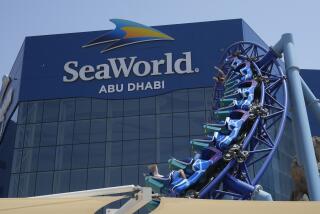Pirate hunters
Earlier this week, sharpshooters on the fantail of the U.S. Navy destroyer Bainbridge picked off three pirates with single bullets to the head, freeing a hostage merchant marine captain. Two days later, the Bainbridge sailed to the aid of another American merchant ship attacked by pirates.
William Bainbridge, the naval officer for whom the ship is named, would be pleased. Bainbridge played an important role cleaning out a similar nest of corsairs who plagued shipping off African coastlines two centuries ago.
Born in Princeton, N.J., in 1774, Commodore Bainbridge joined the Navy in 1798. It was a time when Congress and President John Adams wrestled over how to deal not only with the combined threats of England and France, the military superpowers of the time, but also with bands of pirates who preyed on the rapidly expanding shipping of a youthful nation without much of a sea force.
After service against French forces in the West Indies during what was called the “Quasi-War,” the Navy in 1800 handed Bainbridge the command of a converted merchant ship, the George Washington. He was told to deliver tribute -- a bribe, in effect -- to the dey of Algiers in return for safe passage. This was essentially piracy on a state scale. These days, the Somali pirates take a ship and ask for ransom. Back then, we just paid rulers in advance to safeguard our merchant fleets from the Barbary pirates who operated off the coast of North Africa.
The Barbary pirate states presented a maritime problem not unlike what we see on the lawless Somali coast today. As Ian Toll points out in “Six Frigates,” his fine book on the early days of the U.S. Navy, the Barbary corsairs in the Mediterranean were also close to major shipping lanes, had myriad places to hide and presented few good targets for retaliation.
When Thomas Jefferson became president, he was loath to launch an expensive, large-scale military operation against these rogue states. But he also understood that the system of bribes and tributes was unworkable. In 1801, Jefferson decided to send a squadron to protect American shipping. If they observed that Tripoli, in particular, was, as Toll recounts, “waging war against the United States,” the officers had the green light to bludgeon the city and its pirates into submission. Bainbridge was part of the squadron, first as captain of the warship Essex and, after 1803, as commander of the heavy frigate Philadelphia.
Frigates were the workhorses of the U.S. Navy in that period. They were fast and versatile floating batteries of wood, some with 50 cannons or more. They could outrun the largest British battleships of the day, yet they were still powerful enough to bombard cities and fight multi-ship battles.
Although he commanded one of the strongest U.S. warships of the day, there’s no doubt that if Bainbridge woke up like Rip Van Winkle today, he would view his namesake ship, an Arleigh Burke-class guided missile destroyer, with amazement. He would marvel at its size and capabilities, right down to the ample fresh water and maggot-free food served on board to officers and enlisted men alike. Bainbridge, who had a reputation as a strident disciplinarian, also would be surprised to learn that he could no longer use flogging and other forms of physical punishment to keep sailors in order.
Bainbridge’s command started out well. He captured the Mirboka, one of the larger Barbary ships, and freed the American brig Celia from the pirates. But as he chased another pirate ship near Tripoli, he ran the Philadelphia aground on an uncharted reef. Bainbridge, the ship and his crew were captured. A daring raid led by Lt. Stephen Decatur burned the Philadelphia to keep the pirates from using what could have been an incredibly strong military asset against the U.S. Navy. Bainbridge and his crew remained captives for 19 months until they were freed for a $60,000 ransom and Tripoli’s promise of free trade routes.
Losing one of America’s most important ships didn’t have a lasting effect on Bainbridge’s career. During the War of 1812, he commanded the Constitution, the most storied frigate in the U.S. Navy.
Under Bainbridge, the ship captured the British frigate Java. It was one of several victories by the Constitution that sent shock waves across the Atlantic by helping demonstrate that, on a single-ship basis, the U.S. Navy was among the best in the world. Such losses forced the British to use an entire fleet just to keep the handful of U.S. frigates from destroying British shipping.
The war with the British taught the American Navy how to project force and gave our ships and crews a fearsome reputation. After the war, Decatur -- now Commodore Decatur -- led a squadron back to the Barbary Coast. Within a matter of weeks, the local states signed treaties promising not to raid our shipping. Bainbridge was supposed to have commanded the expedition but was delayed.
Decatur had solved the problem of the Barbary pirates by the time Bainbridge’s squadron reached the Mediterranean. But that didn’t stop Bainbridge from reinforcing America’s image as a sea power. As the senior officer, he took command of the combined forces. His fleet included 18 warships, including a giant ship of the line that carried almost twice the guns of the standard American frigates and matched the biggest battleships in the British navy. He also had five frigates, two sloops of war and 10 other assorted ships. It was the strongest war fleet to have sailed under the young American flag.
--
More to Read
Sign up for Essential California
The most important California stories and recommendations in your inbox every morning.
You may occasionally receive promotional content from the Los Angeles Times.











